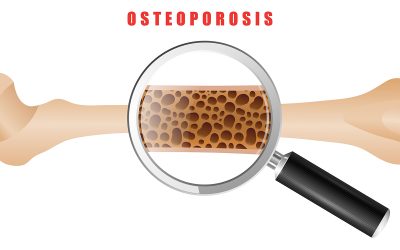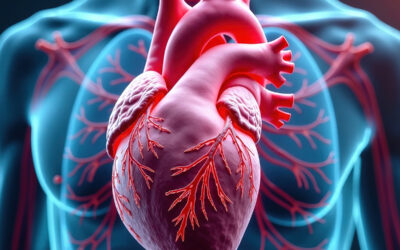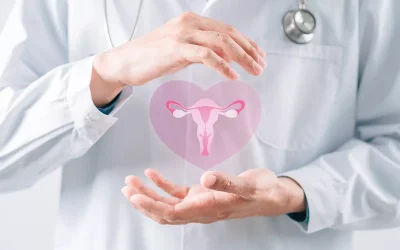Normal Delivery: Benefits, Process & Preparation Tips

Normal delivery, medically known as vaginal delivery, is the natural process through which babies are born. When both mother and baby are healthy, a normal delivery is the preferred method of childbirth, offering a quicker recovery and fewer risks compared to surgery. That said, every birth experience is unique, and understanding the signs, stages, and preparation involved can make the journey smoother. In this article we’ll discuss the symptoms of labour, stages of normal delivery, benefits, and preparation tips that help expectant mothers approach childbirth with awareness and reassurance. Let’s start with the basics.
Table of Contents
ToggleWhat is Normal Delivery?
Normal delivery or vaginal delivery is the process in which a baby is born through the birth canal without surgical intervention. It usually begins with the onset of labour – a natural sequence of uterine contractions that help open the cervix and guide the baby out safely.
This method of childbirth is considered the most natural way to deliver, as it involves minimal medical procedures and supports quicker recovery for the mother. In most cases, normal delivery is possible when pregnancy progresses without major complications and both the mother and baby remain healthy.
Types of Vaginal Delivery
Vaginal delivery can occur in different ways depending on how labour begins and progresses. Doctors decide the safest method based on the mother’s condition, baby’s position, and overall pregnancy health. The main types include:
- Spontaneous Vaginal Delivery: Labour starts and progresses naturally without medical intervention. This is the most common form of normal delivery.
- Induced Vaginal Delivery: Labour is medically initiated using medication or other methods when it does not begin on its own or when there are health concerns for the mother or baby.
- Assisted Vaginal Delivery: Doctors use tools such as forceps or a vacuum extractor to help guide the baby out when the mother is unable to push effectively or if the baby shows signs of distress.
Each type aims to ensure a safe delivery for both mother and baby, depending on individual needs and circumstances.
When is Normal Delivery Possible?
A normal delivery is usually possible when the pregnancy progresses without complications and both the mother and baby are in good health. There are several factors that can help determine whether a vaginal delivery can be safely carried out, such as:
- Healthy Pregnancy: The mother has no major medical conditions such as high blood pressure, diabetes, or placenta previa.
- Favourable Baby Position: The baby is positioned head-down (cephalic position) in the uterus, allowing for easier passage through the birth canal.
- Adequate Pelvic Space: The mother’s pelvis is wide enough for the baby to pass through safely.
- Strong and Regular Contractions: The uterus contracts effectively to dilate the cervix and push the baby down.
- No Umbilical Cord or Placental Complications: The placenta and cord remain healthy, ensuring uninterrupted oxygen supply to the baby.
- Normal Fetal Heart Rate: The baby’s heart rate stays within a healthy range throughout labour.
When these conditions are met, doctors usually encourage a normal delivery while keeping safety as the top priority for both mother and baby.
Preparing for Normal Delivery
Preparing for childbirth involves physical readiness, emotional stability, and practical planning. Taking small, consistent steps during pregnancy can make labour smoother and help mothers feel more confident as delivery approaches. Preparation for normal delivery include:
- Physical Preparation: Gentle prenatal exercises, walking, and pelvic stretches help strengthen muscles and improve flexibility for labour. Regular antenatal check-ups ensure that both mother and baby remain healthy throughout pregnancy.
- Emotional Preparation: Staying calm and positive plays an important role in a successful delivery. Practising relaxation techniques, mindfulness, and breathing exercises can reduce stress and boost confidence during labour.
- Packing Your Hospital Bag: Keep essentials ready in advance, such as comfortable clothes, toiletries, medical records, baby clothes, diapers, and feeding essentials. Having everything organised reduces last-minute anxiety.
- Recognising Labour Signs: Labour often begins with symptoms such as lower back pain, tightening of the abdomen, mild contractions, fluid leakage (water breaking), or the passage of the mucus plug.
- Pain Management Options: While labour pain is a natural part of childbirth, mothers can manage it through breathing techniques, warm compresses, movement, and guided relaxation. In some cases, doctors may recommend medical pain relief methods such as an epidural for comfort.
Stages of Labour During Normal Delivery
Labour unfolds gradually and is divided into three main stages, each marked by different physical and emotional changes. Understanding these stages helps expectant mothers know what to expect as childbirth progresses. Stages include:
Early Labour
This is the beginning phase when contractions start mildly and occur at irregular intervals. The cervix begins to soften and open (dilate) up to about 3–4 centimetres. Mothers may experience backache, mild cramping, or increased vaginal discharge. Staying relaxed, walking, and deep breathing can help manage early contractions.
Active Labour
Contractions become stronger, longer, and more frequent as the cervix dilates from 4 to 7 centimetres. Discomfort increases, and many women prefer to focus on breathing techniques or pain relief options at this stage. Medical staff closely monitor the baby’s heart rate and the mother’s progress.
Transition Phase
This is the most intense stage of labour when the cervix dilates fully to 10 centimetres. Contractions are powerful and close together, preparing the body for delivery. Reassurance and support are crucial at this time, as mothers may feel tired, emotional, or restless.
Emotional Changes During Labour
It’s common to experience a mix of emotions, such as excitement, fear, exhaustion, or relief during labour. Continuous encouragement, breathing control, and guidance from doctors or birthing partners help mothers stay focused as labour reaches its final stage.
The Delivery Process
Once the cervix is fully dilated, the body enters the final phase of labour – the birth itself. This stage involves active participation from the mother, guided closely by doctors to ensure a safe and smooth delivery.
Pushing Stage
With each contraction, the mother pushes in rhythm with her breathing to help move the baby down the birth canal. The doctor provides guidance on when and how to push effectively while monitoring the baby’s heartbeat and position.
Birth of the Baby
As the baby’s head emerges, the doctor supports and gently delivers the shoulders and body. Once the baby is born, the umbilical cord is clamped and cut. Shortly after, the placenta is delivered naturally. This completes the process of childbirth.
Following delivery, doctors check both mother and baby to ensure stable vital signs and manage any immediate needs such as stitching minor tears if required. This marks the beginning of the recovery phase and the start of bonding between mother and child.
Risks Associated with Normal Delivery
Although normal delivery is a natural and generally safe method of childbirth, certain risks may arise during labour or immediately after birth. Most of these can be effectively managed under medical supervision.
Common risks include:
- Perineal Tears: Small tears in the vaginal or perineal area may occur as the baby passes through the birth canal. Doctors repair these immediately after delivery.
- Prolonged Labour: Labour lasting longer than usual can cause fatigue or distress, requiring close monitoring and possible medical assistance.
- Excessive Bleeding (Postpartum Haemorrhage): In rare cases, heavy bleeding may occur after delivery, managed promptly with medications or minor procedures.
- Infection: Infection risk remains low when proper hygiene and hospital protocols are followed.
- Temporary Incontinence: Some women may experience mild urinary or stool leakage after birth due to stretched pelvic muscles.
- Emotional Fatigue: Physical exhaustion and hormonal changes can temporarily affect mood and energy levels.
Benefits of Vaginal (Normal) Delivery
Normal delivery offers several health and recovery advantages for both the mother and the baby. It is often encouraged when medically possible because it supports the body’s natural birthing process and promotes faster healing.
Key benefits include:
- Faster Recovery: Mothers can usually move around and resume daily activities sooner than after a surgical birth.
- Shorter Hospital Stay: Most women are discharged within a day or two, allowing more time to bond with the newborn at home.
- Lower Risk of Infection: Since no surgical incision is made, the chances of infection or postoperative complications are minimal.
- Better Baby Adaptation: Passing through the birth canal helps clear fluid from the baby’s lungs, improving breathing at birth.
- Enhanced Mother-Baby Bonding: Immediate skin-to-skin contact supports emotional connection and helps establish breastfeeding early.
- Balanced Hormone Release: Natural delivery triggers the release of oxytocin, promoting uterine contraction, milk production, and emotional well-being.
Diet, Lifestyle, and Preparation Tips for a Safe Vaginal (Normal) Delivery
Maintaining a healthy lifestyle and balanced nutrition throughout pregnancy helps the body prepare for a smooth and natural delivery. Simple, consistent habits can improve endurance, reduce complications, and support overall well-being, including:
- Eat a Balanced, Nutritious Diet: Include foods rich in dietary fibre such as fruits, vegetables, lentils, and whole grains to prevent constipation and maintain energy levels. Add iron and calcium-rich options like green leafy vegetables, dairy products, and nuts to support strength and bone health.
- Stay Hydrated: Drink plenty of water, coconut water, or buttermilk to maintain fluid balance and reduce fatigue during pregnancy.
- Stay Physically Active: Engage in safe prenatal exercises or yoga to strengthen pelvic muscles and improve flexibility for labour.
- Practise Breathing and Relaxation Techniques: Deep breathing, meditation, or mindfulness can help manage stress and prepare the mind for childbirth.
- Attend Prenatal Classes: Learn about the stages of labour, pain management options, and post-delivery care to feel more confident and informed.
- Maintain a Healthy Weight: Keep weight within the recommended range to lower the risk of delivery complications.
- Get Regular Check-Ups Done: Visit the obstetrician regularly to monitor the baby’s growth, discuss birth preferences, and ensure timely care.
Read More: Pregnancy Diet Chart: What to Eat for a Healthy Pregnancy
Why Choose Graphic Era Hospital for Normal Delivery?
At Graphic Era Hospital, Dehradun, expectant mothers receive expert guidance and compassionate care throughout pregnancy, labour, and post-delivery recovery. Our maternity team combines medical excellence with emotional support to ensure a safe and positive birthing experience. We provide:
- Experienced Obstetricians: A dedicated team of obstetricians, and gynaecologists, manages both uncomplicated and high-risk pregnancies with precision and care. Their expertise in natural birthing techniques ensures safe labour progression and timely intervention whenever needed.
- Advanced Labour and Delivery Facilities: The hospital features modern labour suites equipped with continuous fetal monitoring, pain management options, and emergency support systems. These facilities allow doctors to monitor both mother and baby closely throughout labour, ensuring safety and comfort at every stage.
- Comprehensive Antenatal and Postnatal Care: From regular prenatal check-ups and dietary guidance to postpartum recovery and lactation counselling, the care continues beyond delivery. This approach helps mothers regain strength, adapt to physical changes, and bond confidently with their newborns.
- Personalised and Supportive Approach: Each birth plan is customised based on the mother’s health, preferences, and delivery goals. The team provides emotional support, privacy, and a calm environment to help every woman experience childbirth with reassurance and confidence.
With its commitment to patient-centred maternity care, Graphic Era Hospital stands as one of the trusted destinations for normal delivery in Dehradun.
Embracing Motherhood with Confidence
Childbirth is one of the most powerful and transformative experiences in a woman’s life. With the right medical guidance, preparation, and emotional support, normal delivery can be a safe and fulfilling journey for both mother and baby. Staying informed about the process, recognising early signs of labour, and maintaining a healthy lifestyle play a key role in ensuring a positive birth experience.
At Graphic Era Hospital, Dehradun, a dedicated team of expert obstetricians and nurses supports mothers through every step – from pregnancy care to postnatal recovery. To consult with a specialist or plan a normal delivery, call 1800-889-7351 today.
Frequently Asked Questions (FAQs)
Is a vaginal delivery painful?
What are the benefits of a normal delivery?
Normal delivery allows faster recovery, minimal surgical risks, and early bonding with the baby. At Graphic Era Hospital, Dehradun, doctors guide expectant mothers through every stage of pregnancy to promote a safe and natural birth.
Who cannot have a normal delivery?
Women with certain conditions, such as placenta previa, previous complicated C-sections, or abnormal baby positions, may not be suitable for normal delivery. Doctors evaluate each case to determine the safest option for mother and baby.
How long does it take to heal after a vaginal birth?
Recovery after normal delivery typically takes a few weeks. Mild discomfort or soreness is common, but rest, hydration, and postnatal care help the body heal quickly.
How can I prepare for a normal delivery?
Follow a healthy lifestyle, practise prenatal yoga, attend antenatal classes, and maintain regular communication with your obstetrician. These steps help improve stamina, reduce anxiety, and support a smoother delivery.
What are the early signs of labour pain?
Early labour signs include lower back pain, abdominal tightening, water breaking, and mild contractions at regular intervals. Contact your doctor immediately if contractions become stronger or closer together.
Can I have a normal delivery for my second baby?
Yes, many women who had a previous normal delivery or even a C-section can have a vaginal birth for the next pregnancy, depending on medical evaluation and current pregnancy health.
What are the best tips for a painless normal delivery?
While some level of discomfort is natural, staying active, practising controlled breathing, using warm compresses, and seeking guidance from experienced doctors can significantly ease labour pain.
Where can I find the best hospital near me in Dehradun for normal delivery?
Graphic Era Hospital, Dehradun, offers comprehensive maternity services with advanced labour rooms, experienced obstetricians, and round-the-clock medical support to ensure a safe and comfortable normal delivery experience.
Are painless normal delivery options available near me in Dehradun?
Yes. At Graphic Era Hospital, Dehradun, mothers can choose from various pain-management options, including breathing techniques and epidural anaesthesia, to ensure a more comfortable birthing experience.
Does any hospital near me in Dehradun provide 24-hour maternity care for normal delivery?
Yes. Graphic Era Hospital, Dehradun, offers 24×7 obstetric care, emergency facilities, and neonatal support to handle both normal and high-risk deliveries safely.
How can I book an appointment for a normal delivery near me in Dehradun?
You can easily schedule a consultation with obstetricians at Graphic Era Hospital, Dehradun, by calling 1800-889-7351. The hospital team assists with pregnancy monitoring, labour preparation, and delivery planning.
By Specialities
- Bariatric Surgery
- Cancer Care
- Cardiology
- Dental
- Dermatology
- Diabetes & Endocrinology
- Endocrinology and Diabetes
- ENT (Ear Nose Throat)
- Eye Care
- Gastroenterology
- Haematology
- Health Care
- Health Tips
- Hematology
- Hepatology
- Internal Medicine
- Mental Health and Behavioural Sciences
- Metabolic
- Neonatology
- Nephrology
- Neurology
- Nutrition & Dietetics
- Obstetrics & Gynaecology
- Oncology
- Ophthalmology
- Orthopaedics
- Paediatric
- Physiotherapy & Rehabilitation
- Plastic and Reconstructive Surgery
- Psychology
- Pulmonology
- Rheumatology
- Spine
- Urology
Recent Posts
- Most Common Lifestyle Diseases in India and How to Prevent Them
- Does Pain in the Lower Back Always Mean a Kidney Problem?
- Osteoporosis: Early Warning Signs, Causes, and Treatment
- Understanding TAVI/TAVR: A Minimally Invasive Aortic Valve Replacement Procedure
- Acute and Chronic Bronchitis: Know the Difference and When to Seek Help
Need expert medical advice?
Share your details and our healthcare specialists will reach out to assist you.
By proceeding, you acknowledge and agree to our Privacy Policy, Terms of Use, and Disclaimer.




















